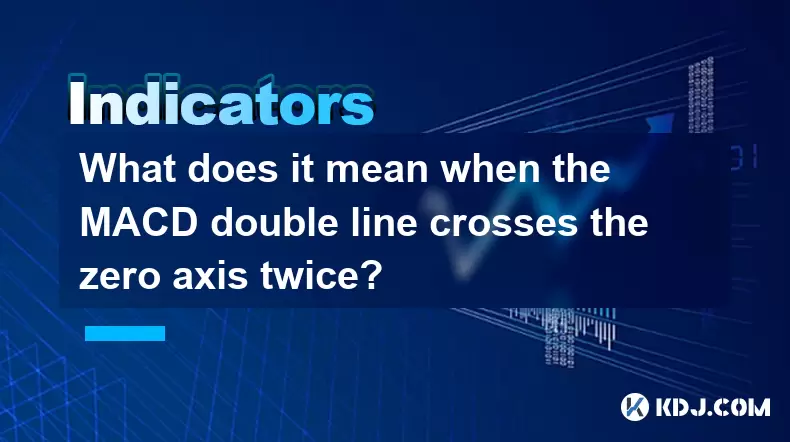-
 Bitcoin
Bitcoin $118600
0.36% -
 Ethereum
Ethereum $3855
1.06% -
 XRP
XRP $3.195
-0.09% -
 Tether USDt
Tether USDt $1.000
-0.04% -
 BNB
BNB $844.5
6.23% -
 Solana
Solana $191.3
2.83% -
 USDC
USDC $0.9997
-0.01% -
 Dogecoin
Dogecoin $0.2376
0.10% -
 TRON
TRON $0.3242
0.83% -
 Cardano
Cardano $0.8222
0.13% -
 Hyperliquid
Hyperliquid $45.26
6.53% -
 Sui
Sui $4.200
-2.56% -
 Stellar
Stellar $0.4336
-1.24% -
 Chainlink
Chainlink $18.86
0.28% -
 Hedera
Hedera $0.2796
-1.75% -
 Bitcoin Cash
Bitcoin Cash $583.3
-1.84% -
 Avalanche
Avalanche $27.06
8.09% -
 Litecoin
Litecoin $112.3
-1.16% -
 Toncoin
Toncoin $3.353
0.58% -
 UNUS SED LEO
UNUS SED LEO $8.968
-0.11% -
 Shiba Inu
Shiba Inu $0.00001395
-0.54% -
 Ethena USDe
Ethena USDe $1.001
-0.03% -
 Uniswap
Uniswap $10.76
0.69% -
 Polkadot
Polkadot $4.175
0.26% -
 Monero
Monero $326.7
1.07% -
 Bitget Token
Bitget Token $4.665
1.61% -
 Dai
Dai $0.9998
-0.02% -
 Pepe
Pepe $0.00001271
0.32% -
 Cronos
Cronos $0.1416
2.01% -
 Aave
Aave $299.3
1.15%
What does it mean when the MACD double line crosses the zero axis twice?
A double MACD zero-axis cross can signal strong trend confirmation—watch for two consecutive crosses in the same direction, supported by volume and price action for reliable crypto trading signals.
Jul 28, 2025 at 11:57 pm

Understanding the MACD Indicator Structure
The Moving Average Convergence Divergence (MACD) is a momentum-based technical analysis tool widely used in cryptocurrency trading. It consists of three components: the MACD line, the signal line, and the histogram. The MACD line is calculated by subtracting the 26-period Exponential Moving Average (EMA) from the 12-period EMA. The signal line is a 9-period EMA of the MACD line. These two lines oscillate above and below the zero axis, which serves as a baseline for determining bullish or bearish momentum.
When the MACD line crosses above the zero axis, it indicates that the shorter-term average (12-period EMA) has moved above the longer-term average (26-period EMA), signaling increasing bullish momentum. Conversely, when the MACD line crosses below the zero axis, it suggests bearish momentum is strengthening. Observing a single crossover can provide insight into trend direction, but when the double line crosses the zero axis twice, it reveals a more complex market dynamic involving shifts in momentum and potential trend reversals.
Interpreting the First Zero Axis Cross
A double zero-axis cross begins with the first crossover, which marks a significant shift in market sentiment. For example, if the MACD line moves from negative to positive territory, crossing above zero, it reflects growing buying pressure in the cryptocurrency market. This often occurs after a prolonged downtrend, indicating that short-term momentum is overtaking long-term bearish pressure.
Traders should pay close attention to the volume and price action accompanying this first cross. A strong upward price movement combined with increasing trading volume strengthens the validity of the bullish signal. It is also essential to confirm this crossover with other indicators such as Relative Strength Index (RSI) or support/resistance levels to reduce false signals. The first cross does not guarantee a sustained uptrend, but it does suggest that the balance of power may be shifting from sellers to buyers.
Analyzing the Second Zero Axis Cross
The second crossover completes the "double cross" pattern. If, after the first bullish crossover, the MACD line retreats and crosses back below the zero line, it indicates that bullish momentum failed to sustain itself. This retracement may reflect profit-taking, renewed selling pressure, or lack of conviction among buyers. Alternatively, if the MACD line was initially below zero, crosses above, then dips back below, and then rises above zero a second time, it suggests a reconfirmation of bullish strength after a temporary pullback.
Each of these scenarios carries different implications. A failed second cross (where the MACD line fails to stay above zero) may signal weak momentum and a potential continuation of the prior downtrend. In contrast, a successful second cross—where the line breaks above zero again with strong price confirmation—can indicate a resilient uptrend gaining traction. The behavior of the signal line during these crossovers also matters. If the signal line follows the MACD line across the zero axis, it reinforces the strength of the move.
How to Identify a Valid Double Zero Cross in Crypto Charts
To identify a legitimate double zero-axis cross on a cryptocurrency chart, follow these steps:
- Open a trading platform such as TradingView or Binance’s advanced charting tools.
- Apply the MACD indicator to the price chart of your chosen cryptocurrency (e.g., BTC/USDT).
- Ensure the default settings are used: 12, 26, and 9 periods for EMA calculations.
- Observe the MACD line (typically blue or black) relative to the zero axis (horizontal centerline).
- Look for the first instance where the MACD line crosses the zero line, either upward or downward.
- Wait for the line to reverse direction and cross the zero axis a second time in the same direction as the first cross.
- Confirm that both crossovers occur within a reasonable time frame—typically within several days to a few weeks on daily charts.
It is critical to distinguish between a true double cross and random oscillations near the zero line. Only clear, decisive crosses with closing values beyond zero should be considered valid. Additionally, check for divergence between price and MACD: if the price makes a lower low but the MACD forms a higher low during the second cross, it may indicate hidden bullish strength.
Practical Trading Implications of the Double Cross
When the MACD double line crosses the zero axis twice in the same direction, it can serve as a powerful confirmation signal. For instance, two consecutive upward crosses above zero may suggest a strong bullish trend is emerging. Traders might interpret this as a signal to enter long positions, especially if supported by rising volume and key resistance breakouts.
To execute a trade based on this signal:
- Wait for the second cross to complete, ensuring the MACD line closes above zero.
- Check that the signal line is also trending upward and ideally crosses above zero as well.
- Confirm with price action: look for bullish candlestick patterns such as engulfing bars or hammer formations.
- Set a stop-loss below the most recent swing low to manage risk.
- Use take-profit levels based on Fibonacci extensions or previous resistance zones.
In bearish scenarios, two downward crosses below zero may prompt short entries or exits from long positions. However, in highly volatile crypto markets, false signals are common. Applying filters such as moving averages or trendlines can improve accuracy. For example, only acting on double crosses that occur above the 200-period EMA can help align trades with the broader trend.
Common Misinterpretations and How to Avoid Them
One frequent mistake is treating every zero-axis cross as a trade signal. The MACD can fluctuate around zero during sideways or choppy markets, generating misleading crossovers. To avoid this, assess the overall market context. If the price is consolidating within a range, zero-axis crosses may lack directional significance.
Another error is ignoring the signal line’s position. A double cross by the MACD line alone is less reliable if the signal line remains on the opposite side of zero. Always evaluate both lines. Also, avoid relying solely on MACD—combine it with on-chain data (like exchange outflows) or order book depth for a more comprehensive view, especially in crypto where sentiment shifts rapidly.
FAQs
What is the difference between a MACD zero cross and a signal line cross?
A MACD zero cross occurs when the MACD line moves above or below the zero axis, indicating a shift in momentum relative to the long-term trend. A signal line cross happens when the MACD line crosses above or below the 9-period EMA of itself, signaling short-term momentum changes. The zero cross reflects broader trend direction, while the signal line cross is used for timing entries.
Can the double zero cross occur in both bullish and bearish directions?
Yes. A bullish double cross happens when the MACD line crosses above zero, pulls back below, then crosses above again. A bearish double cross occurs when the line crosses below zero, briefly rises above, then crosses below a second time. Both patterns indicate momentum testing and reconfirmation.
Is the double zero cross more reliable on higher timeframes?
Generally, yes. On daily or weekly charts, zero-axis crossovers are less prone to noise and reflect stronger trends. On lower timeframes like 5-minute or 15-minute charts, frequent crossovers can occur due to volatility, reducing reliability.
Should I use MACD histogram confirmation for the double cross?
Yes. A rising MACD histogram (bars increasing in height) after the second cross supports strengthening momentum. If the histogram is shrinking despite the cross, it may indicate weakening momentum, warranting caution.
Disclaimer:info@kdj.com
The information provided is not trading advice. kdj.com does not assume any responsibility for any investments made based on the information provided in this article. Cryptocurrencies are highly volatile and it is highly recommended that you invest with caution after thorough research!
If you believe that the content used on this website infringes your copyright, please contact us immediately (info@kdj.com) and we will delete it promptly.
- Avalanche (AVAX) Price Pump Incoming? Analysts Weigh In
- 2025-07-29 06:50:12
- Presales, Investment, July 2025: What's Hot and What's Not
- 2025-07-29 06:30:12
- PayPal, Bitcoin, and Merchants: A New Era of Commerce?
- 2025-07-29 07:10:13
- RUVI Token's Ripple Rally Potential: Audited AI Crypto Heats Up!
- 2025-07-29 04:50:12
- ADA Price, Cardano, SUI & Remittix: Decoding the Latest Crypto Moves
- 2025-07-29 04:50:12
- Solana, ARK Invest, and Staking: A New Era of Institutional Crypto?
- 2025-07-29 05:30:12
Related knowledge

What does it mean when the EMA combination crosses upward for the first time after sideways trading?
Jul 28,2025 at 03:43pm
Understanding the EMA and Its Role in Technical AnalysisThe Exponential Moving Average (EMA) is a widely used technical indicator in cryptocurrency tr...

What signal does the ROC send when it rises rapidly from a low level and breaks through the zero axis?
Jul 27,2025 at 10:15am
Understanding the Rate of Change (ROC) IndicatorThe Rate of Change (ROC) is a momentum-based oscillator used in technical analysis to measure the perc...

What does it mean when the price breaks through the double bottom neckline and the moving averages are arranged in a bullish pattern?
Jul 28,2025 at 10:57am
Understanding the Double Bottom PatternThe double bottom is a widely recognized reversal chart pattern in technical analysis, particularly within the ...

What signal does the DMA fast line cross the slow line above the zero axis?
Jul 28,2025 at 05:42am
Understanding the DMA Indicator and Its ComponentsThe DMA (Difference of Moving Averages) indicator is a technical analysis tool used in cryptocurrenc...

What does it mean that the rebound is blocked after the moving average is arranged in a short position for the first time?
Jul 26,2025 at 10:51am
Understanding the Short-Term Moving Average ConfigurationWhen traders refer to a 'short position arrangement' in moving averages, they are describing ...

What does it mean that the ZIGZAG low point is raised and the high point breaks through the previous peak?
Jul 28,2025 at 03:28am
Understanding the ZIGZAG Indicator in Cryptocurrency TradingThe ZIGZAG indicator is a technical analysis tool widely used in cryptocurrency trading to...

What does it mean when the EMA combination crosses upward for the first time after sideways trading?
Jul 28,2025 at 03:43pm
Understanding the EMA and Its Role in Technical AnalysisThe Exponential Moving Average (EMA) is a widely used technical indicator in cryptocurrency tr...

What signal does the ROC send when it rises rapidly from a low level and breaks through the zero axis?
Jul 27,2025 at 10:15am
Understanding the Rate of Change (ROC) IndicatorThe Rate of Change (ROC) is a momentum-based oscillator used in technical analysis to measure the perc...

What does it mean when the price breaks through the double bottom neckline and the moving averages are arranged in a bullish pattern?
Jul 28,2025 at 10:57am
Understanding the Double Bottom PatternThe double bottom is a widely recognized reversal chart pattern in technical analysis, particularly within the ...

What signal does the DMA fast line cross the slow line above the zero axis?
Jul 28,2025 at 05:42am
Understanding the DMA Indicator and Its ComponentsThe DMA (Difference of Moving Averages) indicator is a technical analysis tool used in cryptocurrenc...

What does it mean that the rebound is blocked after the moving average is arranged in a short position for the first time?
Jul 26,2025 at 10:51am
Understanding the Short-Term Moving Average ConfigurationWhen traders refer to a 'short position arrangement' in moving averages, they are describing ...

What does it mean that the ZIGZAG low point is raised and the high point breaks through the previous peak?
Jul 28,2025 at 03:28am
Understanding the ZIGZAG Indicator in Cryptocurrency TradingThe ZIGZAG indicator is a technical analysis tool widely used in cryptocurrency trading to...
See all articles

























































































